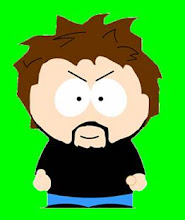Tuesday, December 2, 2008
Monday, November 24, 2008
Sunday, August 31, 2008
First Lesson-ish Type Post
OK, so first and foremost, if you're coming here looking for uke instruction - ha! But, I will share some thoughts here from time to time. Today's thought is on the Em chord.
When I first started playing I was very happy to see the C F G songs. These were relatively simple chords to both learn and switch between. These songs made me feel good about myself.
Then there were the songs in G. Many of them used an Em chord, and especially the ones that I liked the sound of. But it was very depressing, because playing that damned 4-fingered Em was hard, and I didn't think I was ever going to be able to do it.
Well, lucky me, I soon happened upon a chord chart which showed me that one did not HAVE to play the Em that way, but could instead play a 3-finger, or even a 2-finger, version. And suddenly my spirits were lifted again.
The 4-finger Em is played 4432 (from 4th to 1st). The 3-finger version leaves the 4th string open, so is 0432. And the 2-finger version leaves both the 2nd and 4th strings open, so is 0402. They all sound slightly different, but they are mostly interchangeable.
What's the point? Well, if you didn't know that Em had some "easier" versions, now you know. Perhaps it will get you over that C F G hump that I experienced in my early going.
Finally, most chords have multiple fingerings available. If you're so inclined you can check out a previous post to get information about how to find these different fingerings.
When I first started playing I was very happy to see the C F G songs. These were relatively simple chords to both learn and switch between. These songs made me feel good about myself.
Then there were the songs in G. Many of them used an Em chord, and especially the ones that I liked the sound of. But it was very depressing, because playing that damned 4-fingered Em was hard, and I didn't think I was ever going to be able to do it.
Well, lucky me, I soon happened upon a chord chart which showed me that one did not HAVE to play the Em that way, but could instead play a 3-finger, or even a 2-finger, version. And suddenly my spirits were lifted again.
The 4-finger Em is played 4432 (from 4th to 1st). The 3-finger version leaves the 4th string open, so is 0432. And the 2-finger version leaves both the 2nd and 4th strings open, so is 0402. They all sound slightly different, but they are mostly interchangeable.
What's the point? Well, if you didn't know that Em had some "easier" versions, now you know. Perhaps it will get you over that C F G hump that I experienced in my early going.
Finally, most chords have multiple fingerings available. If you're so inclined you can check out a previous post to get information about how to find these different fingerings.
Sunday, August 24, 2008
Beirut - Hallelujah
Another one from Ukulele Hunt. As usual, the chords are at the red link below the youtube clip.
Two notes:
- First, as he notes in the opening paragraph, the Jeff Buckley version is vastly superior. But, it's not on a uke, which I'd assume is why it doesn't get first billing.
- Second, the Am variation used during the C/Am alternation is well worth trying.
Two notes:
- First, as he notes in the opening paragraph, the Jeff Buckley version is vastly superior. But, it's not on a uke, which I'd assume is why it doesn't get first billing.
- Second, the Am variation used during the C/Am alternation is well worth trying.
Same Old Lines - Rod (not Rob) Thomas
Courtesy of Ukulele Hunt. Click the red link below the youtube clip to get the chords.
Sunday, August 17, 2008
Froggy Went A Courtin - Laurie Berkner
Saturday, August 16, 2008
Falling Slowly - The Frames
Lean On Me - Bill Withers
A Different Kind of Chord Book
I just found something neat. It's a different kind of chord book. It's got a really great concept. It shows you (a) what notes are in a given chord and (b) every place that any of those notes is found, up through the 14th fret. This lets you see all of the different ways that a chord could be played. For instance, the typical A major chord is played 2100 (A,C#,E,A). In this different kind of chord book you can see that 6400 (C#,E,E,A) also works, and yet provides a completely different feel. An example of a song that uses both of these A's is on Uke Hunt.
The PDF can be found here.
The PDF can be found here.
He'll Have To Go - Jim Reeves
This is a proof of concept post for a song that's already in the binder.
This is the song:
He'll Have To Go
And this is what it sounds like:
He'll Have To Go
This is the song:
He'll Have To Go
And this is what it sounds like:
He'll Have To Go
Subscribe to:
Comments (Atom)
